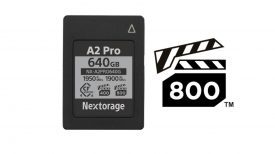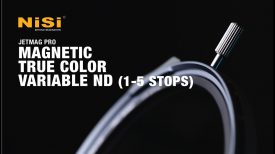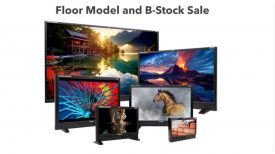The DJI Spark is a tiny new drone aimed squarely at the selfie generation. DJI are touting it as a personal drone designed so you can literally take it anywhere to capture video and stills. Not only can it take off and land in the palm of your hand, but Spark has also been designed to interact with the user by using simple hand gestures.

Handy
According to DJI, Spark is the first drone that users can control by hand gestures alone. DJI are also claiming that even if you’ve never flown a drone before, flying Spark is easy because the only remote controller you need is your hand. This is true in some regards, but the hand gestures still have a limited range and if you want to fly Spark further away than you will need to do it through either a smartphone or optional remote controller.
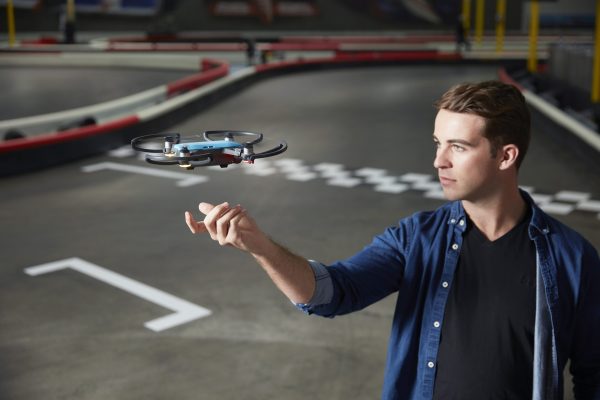
When Spark takes off from your hand, it automatically enters Gesture Mode. In Gesture Mode, you can also send Spark up and away from you, take a selfie, and call it back with just your hands.
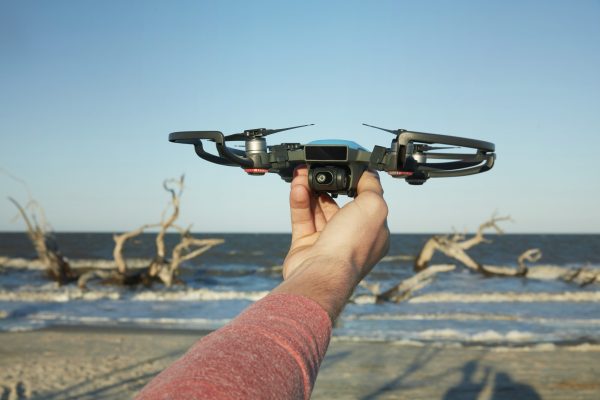
Spark is small enough to fit in a bag and weighs 10.6 ounces (300 g). To put that in perspective a Mavic Pro weighs in at 1.62 lbs (734g). The Spark will be available in five different colors: Alpine White, Sky Blue, Meadow Green, Lava Red, and Sunrise Yellow.
QuickShot
A new QuickShot Intelligent Flight Mode lets the Spark fly along a preset flight path while recording a short video and tracking a subject along the way.
Four QuickShots are available:
RocketAscend with the camera pointing downward.
DronieFly backward and upward, with the camera locked on your subject.
CircleCircle around your target.
HelixFly upward, spiraling around your subject.
For each QuickShot, Spark will automatically create a 10-second video from your flight, intended for you to share on social media.
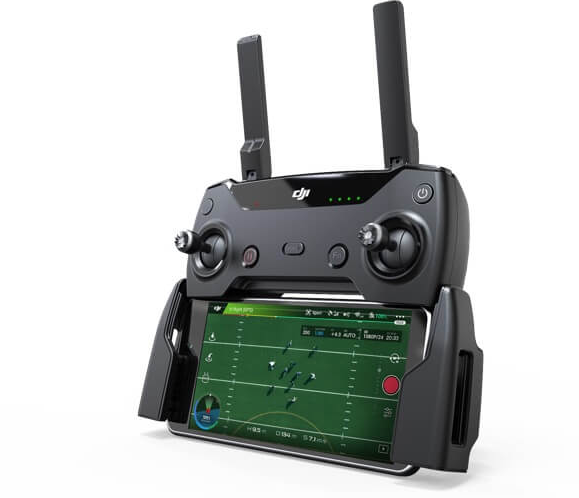
Intelligent flight modes just like the Mavic Pro
Previously introduced Intelligent Flight Modes such as TapFly and ActiveTrack can also be found on the Spark. Developed based on DJI’s vision technology, a new TapFly sub mode called Coordinate allows Spark to fly to a location you tap on the screen of your mobile device. TapFly’s Direction Mode lets you keep flying in the direction you tap on the screen. Using ActiveTrack, Spark will automatically recognize and track an object you choose, keeping it at the center of the frame. Whether you are using TapFly or tracking a subject, Spark’s 3D Sensing System will actively sense obstacles in front of the aircraft.
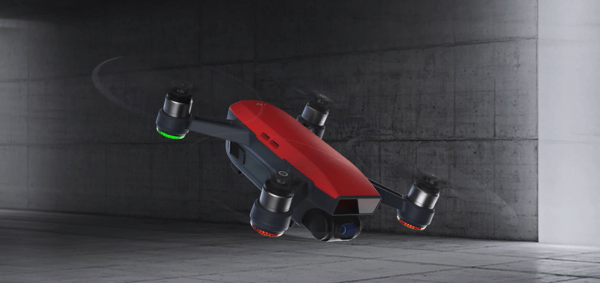
Sport mode
With the remote controller accessory, operators can switch to Sport Mode where the drone can reach a claimed maximum speed of 31 mph (50 kph). Sport Mode sets the gimbal to first-person view (FPV) by default, so the camera moves with you as you fly. Spark will also be compatible with DJI Goggles.
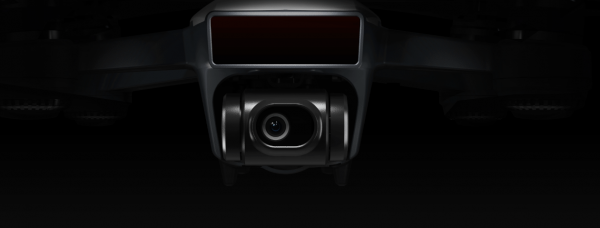
Video recording is limited to 1080 30p at just 24Mbps
Spark uses a 1/2.3” CMOS sensor that captures 12-megapixel photos and shoots stabilized HD 1080p video. The two-axis mechanical gimbal is claimed to reduce shake and rolling shutter effects. Spark’s camera has an f/2.6 wide-angle lens with a 25 mm equivalent focal length. The 1080p video you can capture can only be done at 30fps though and in a bitrate of just 24 Mbps. If you are expecting the Spark to capture footage that is as good as your Phantom 4 Pro you might be in for a shock.

Perfect for the selfie generation
Spark includes many previous DJI drone shooting modes with two new additions: Pano and ShallowFocus. In Pano Mode, the camera creates horizontal or vertical panoramas by automatically adjusting its gimbal and heading, taking a series of pictures and stitching them together. ShallowFocus allows you to put part of a picture into sharp focus while the rest of the image is softened, creating photographs with a shallow depth of field. An array of filters and automatic editing templates are available in the DJI GO 4 app.
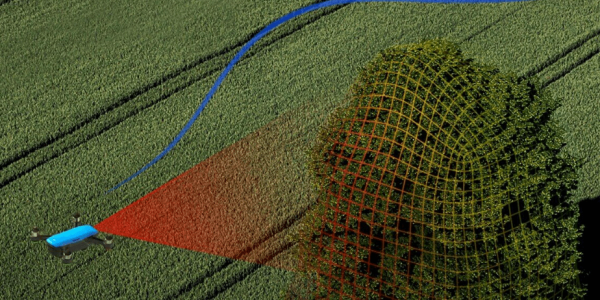
Autonomous flight
Spark’s FlightAutonomy system consists of the main camera, a downward-facing vision system, a forward-facing 3D Sensing System, dual-band GPS and GLONASS, a high-precision inertial measurement unit, and 24 computing cores. These features allow Spark to hover accurately with vision system assistance at up to 98 feet (30 meters) and sense obstacles from up to 16 ft (5 m) away.
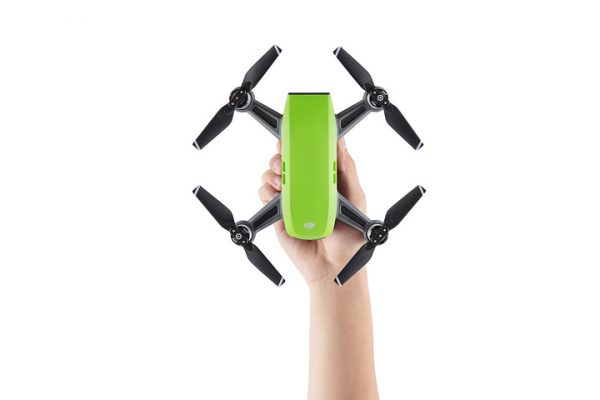
Like all recent DJI drones, Spark can return to its home point automatically with a strong enough GPS signal. While using the remote controller, if the battery gets too low, connection is lost, or the operator presses the Return to Home (RTH) button, Spark flies back to the preset home point while sensing obstacles in its path. Spark also integrates DJI’s GEO System or NFZ geofencing to provide you with up-to-date guidance on areas where flight may be limited by regulations or raise safety or security concerns.
Spark is powered by a high-energy density LiPo battery and has a maximum flight time of up to 16 minutes. When flying with the remote controller accessory, Spark allows for 720p real-time video transmission from up to 1.2 miles (2 km) away.
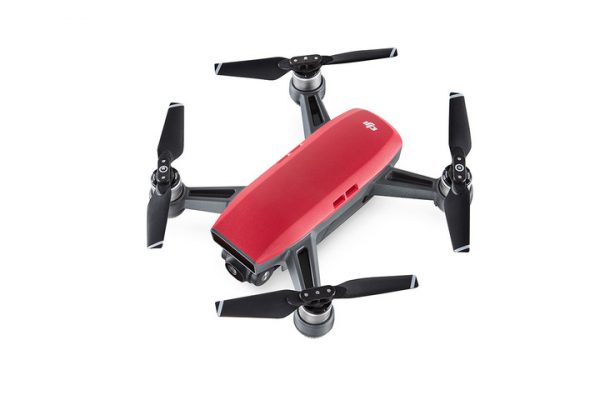
How much is it and when can I get one?
The US retail price of a DJI Spark, including an aircraft, a battery, a USB charger and three pairs of propellers, is $499 USD. The Spark Fly More Combo includes an aircraft, two batteries, four pairs of propellers, a remote controller, propeller guards, a charging hub, a shoulder bag and all necessary cables, with a US retail price of $699 USD. Pricing and availability of other accessories for the Spark will be announced at a later date. Spark will be available for pre-order at store.dji.com, four DJI Flagship Stores, and authorized dealers. Spark pre-orders will start shipping in mid-June. Color options and Fly More Combo availability may vary at different sales channels.
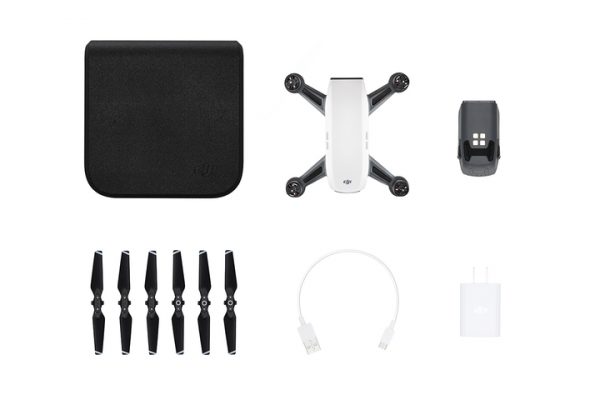
DJI Care Refresh for Spark
DJI Care Refresh for Spark, a new one-year coverage plan, will enable Spark customers to obtain up to two full replacements that are new or equivalent to new, for a small additional charge. DJI Care Refresh for Spark is currently available in a few countries, including China, Hong Kong, the United States, Canada, 28 European Union countries, and Australia.

DJI Spark: final thoughts
The DJI Spark looks to be a novel idea and it will be interesting to see if the convenience factor alone makes it worth buying for filmmakers. It’s clearly not being aimed at professional shooters with the limited 1080 30p frame rate and 24 Mbps H.264 codec, but nonetheless I think we may well see them being used by filmmakers to create unique shots that few other drones are capable of achieving.
To me the Spark is almost like the action camera of drones. You can deploy it quickly and use it in places where other drones couldn’t possibly go, although just how well the hand gestures actually work in the real world remains to be seen. At $499 US though, it could be worth a try – that’s not that much more than a GoPro Hero 5 Black, and that doesn’t even fly.
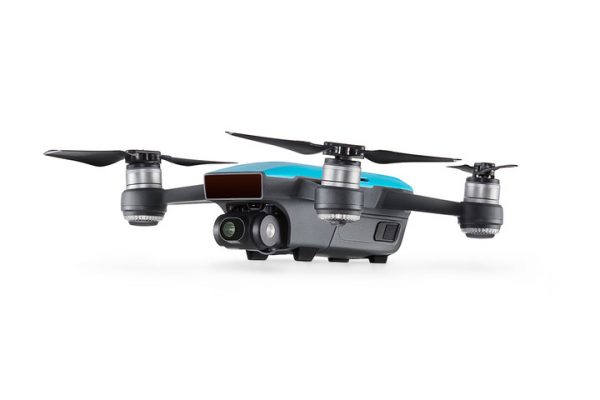
What do you think about the Spark? Would you buy one? Do you think the quality will be good enough for filmmakers? Let us know in the comments below.
DJI Spark Specifications:
Max Ascent Speed 9.8 ft/s (3 m/s) in Sport Mode without wind
Max Descent Speed 9.8 ft/s (3 m/s) in Auto Landing Mode
Max Speed 31 mph (50 kph) in Sport Mode without wind
Max Service Ceiling Above Sea Level 13,123 feet (4,000 m)
Max Flight Time 16 minutes (no wind at a consistent 12.4 mph (20 kph))
Max Hovering Time 15 minutes (no wind)
Operating Temperature Range 32° to 104° F (0° to 40° C)
Satellite Positioning Systems GPS/GLONASS
Hover Accuracy Range Vertical:
+/- 0.1 m (when Vision Positioning is active) or +/-0.5 m
Horizontal:
+/- 0.3 m (when Vision Positioning is active) or +/-1.5 m
Transmitter Power (EIRP) 2.4 GHz
FCC: 25 dBm; CE: 18 dBm; SRRC: 18 dBm
5.8 GHz
FCC: 27 dBm; CE: 14 dBm; SRRC: 27 dBm
Operating Frequency 2.400 – 2.483 GHz; 5.725 – 5.825 GHz
Takeoff Weight 300 g
Dimensions 143×143×55 mm
Diagonal Distance (propellers excluded) 170 mm
3D SENSING SYSTEM
Obstacle Sensing Range 1-16 ft (0.2 – 5 m)
Operating Environment Surface should be larger than 20×20 cm and enable diffuse reflection, with reflection rate >20% (eg. wall, tree, people)
CAMERA
Sensor 1/2.3″ CMOS
Effective pixels: 12 MP
Lens FOV 81.9° 25 mm (35 mm format equivalent) f/2.6
(shooting range: 2 m to ∞)
ISO Range Video: 100-3200
Photo: 100-1600
Electronic Shutter Speed 2-1/8000 s
Image Size 3968×2976
Still Photography Modes Single Shot
Burst Shooting: 3 frames
Auto Exposure Bracketing (AEB): 3 bracketed frames at 0.7 EV bias
Interval: 2/3/5/7/10/15/20/30/60 s
Video Resolution FHD: 1920×1080 30p
Max Video Bitrate 24 Mbps
Supported File Systems FAT32 (≤ 32 GB)
Photo Format JPEG
Video Format MP4 (MPEG-4 AVC/H.264)
REMOTE CONTROLLER
Operating Frequency 2.412-2.462 GHz; 5.745-5.825 GHz
Max Transmission Distance 2.412 – 2.462 GHz (unobstructed, free of interference)
FCC: 1.2 mi (2 km); CE: 0.3 mi (500 m); SRRC: 0.3 mi (500 m)
5.745 – 5.825 GHz (unobstructed, free of interference)
FCC: 1.2 mi (2 km); CE: 0.18 mi (300 m); SRRC: 0.7 mi (1.2 km)
Operating Temperature Range 32° to 104° F (0° to 40° C)
Battery 2970 mAh
Transmitter Power (EIRP) 2.4 GHz
FCC: ≤26 dBm; CE: ≤18 dBm; SRCC: ≤18 dBm
5.8 GHz
FCC: ≤28 dBm; CE: ≤14 dBm; SRCC: ≤26 dBm
Operating Current/Voltage 950 mAh @3.7 V
Supported Mobile Device Size Thickness range: 6.5-8.5 mm
Max length: 160 mm
INTELLIGENT FLIGHT BATTERY
Capacity 1480 mAh
Voltage 11.4 V
Max Charging Voltage 13.05 V
Battery Type LiPo 3S
Energy 16.87 Wh
Net Weight Approx. 0.2 lbs (95 g)
Charging Temperature Range 41° to 104° F (5° to 40° C)



